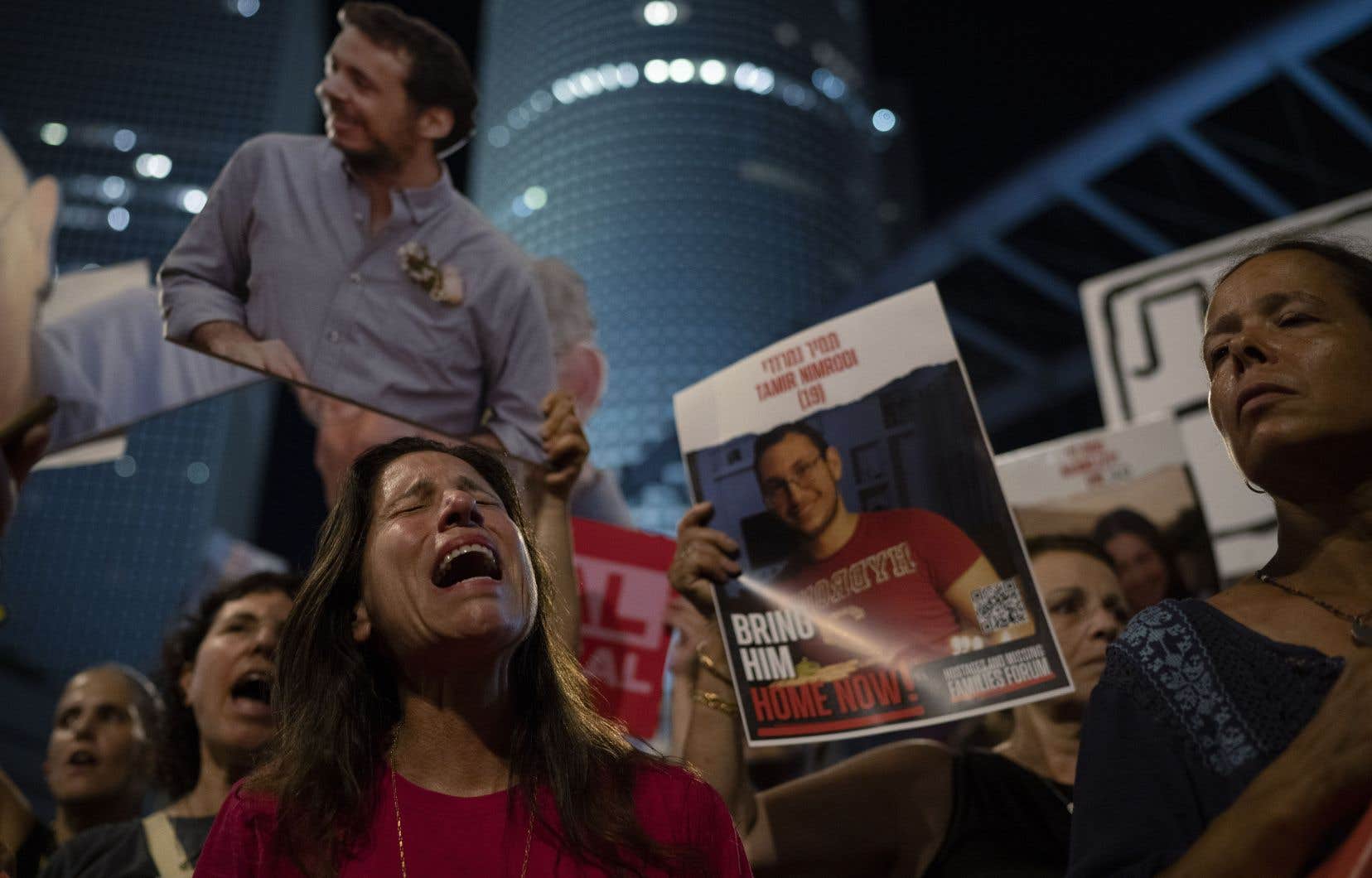Israeli artillery and warplanes carried out new deadly strikes on Thursday in the devastated and besieged Gaza Strip, where the army recovered the bodies of five Israelis killed during the Hamas attack on October 7.
In response to this unprecedented attack by the Palestinian Islamist movement on its soil, Israel vowed to destroy it and launched a major military offensive in Gaza, which has so far left 39,175 dead, according to data from the Health Ministry of the Hamas-led Gaza government.
After being received at the American Congress where he defended his war in Gaza and urged the American ally to continue its deliveries of military aid, the Israeli Prime Minister, Benjamin Netanyahu, meets Thursday in Washington with President Joe Biden and then his Vice President Kamala Harris.
In the Gaza Strip, where Mr. Netanyahu wants to continue the war until Hamas is eradicated, the army carried out strikes in Gaza City and Beit Lahia, where nine people were killed according to medical sources, as well as in Al-Bureij, wounding seven Palestinians, most of them children, according to hospital sources. Israeli forces also continued their operations in Khan Younis and Rafah.
“Israeli warplanes targeted civilians sitting near their homes,” killing five, Ahmed Kahlout, director of civil defense in the area, said in Beit Lahia.
“Like the dead”
At the Kamal Adwane hospital in this city, wounded people and bodies are transported in chaos in vans or on stretchers. A man cries next to a dead relative, a woman wails, bodies covered in white sheets lie on the ground.
Thousands of Palestinians are once again on the roads to flee the bombardments, following evacuation orders from the army covering several sectors of the Palestinian territory, ruled since 2007 by Hamas.
With nowhere to go, families are taking refuge in the streets, or, as in Khan Younis, near a cemetery.
“We live next to the dead. We are like the dead; the difference is that we breathe, they don’t,” says Rytal Motlaq, a displaced person who has improvised a shelter there with tarpaulins.
The attack carried out on October 7 by Hamas commandos infiltrated from Gaza into southern Israel resulted in the deaths of 1,197 people, mostly civilians, according to an AFP count based on official Israeli data.
Of the 251 people abducted during the attack, 111 are still being held captive in Gaza, 39 of whom have died, according to the army.
The Israeli air and ground offensive in Gaza has caused a humanitarian catastrophe, with some 2.4 million people living in conditions described as dire by the UN and lacking food and water.
“Crisis of confidence”
On Thursday, the army said it had recovered the bodies of five Israelis killed on October 7 and held in Gaza during an operation in Khan Younis.
She said the bodies of Maya Goren, Ravid Katz and Oren Goldin, residents of kibbutzim near Gaza, as well as those of two soldiers, Tomer Ahimas and Kiril Brodski, had been returned to Israel.
The Hostage Families Forum has demanded that Benjamin Netanyahu conclude an agreement to “bring back” all the hostages, “the living and the dead.”
The Forum also called for an emergency meeting with the Israeli negotiating team, citing a “crisis of confidence.”
Talks on a ceasefire and hostage release, scheduled for Thursday in Qatar and involving Israel, have been postponed until next week, according to a source close to the discussions who did not specify the reasons for the delay.
“Preponderant control”
Speaking to Congress, Mr Netanyahu spoke about the post-war period in Gaza, saying that Israel wanted “in the near future to maintain a preponderant security control in Gaza” but without “reoccupying” the Palestinian territory, as it did from 1967 to 2005.
He called for a “civil administration in Gaza led by Palestinians who do not seek to destroy Israel,” excluding Hamas, which is considered a terrorist organization by Israel, the United States and the European Union.
As Washington grows increasingly alarmed by the human toll of the war, he has also rejected “all the lies” about civilian casualties, boasting “one of the lowest ratios of non-combatant casualties” to combatants killed “in the history of urban warfare.”
In May, the UN said women and children accounted for at least 56 percent of those killed in the war, based on data from Hamas’s health ministry.
